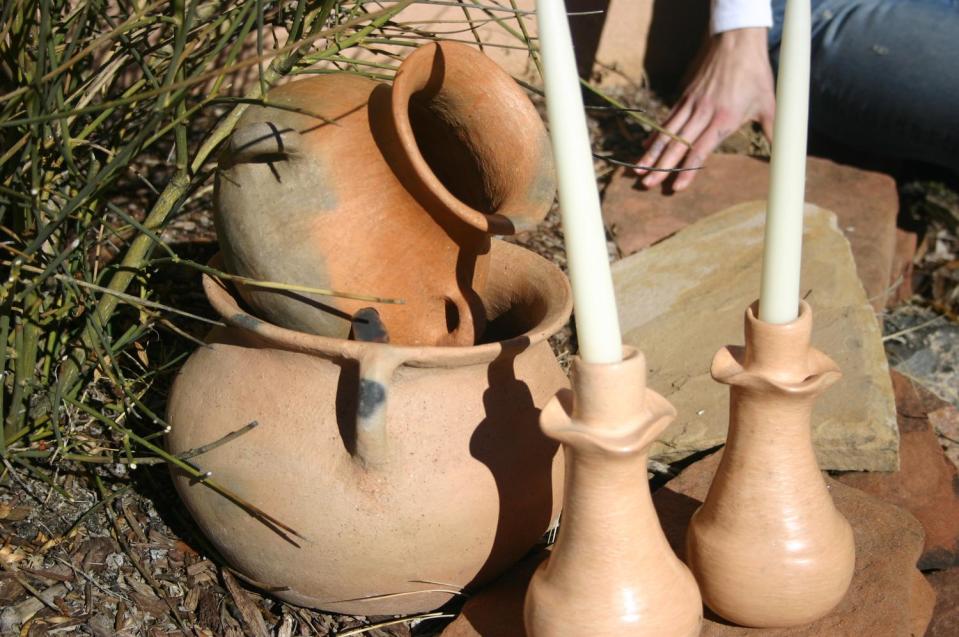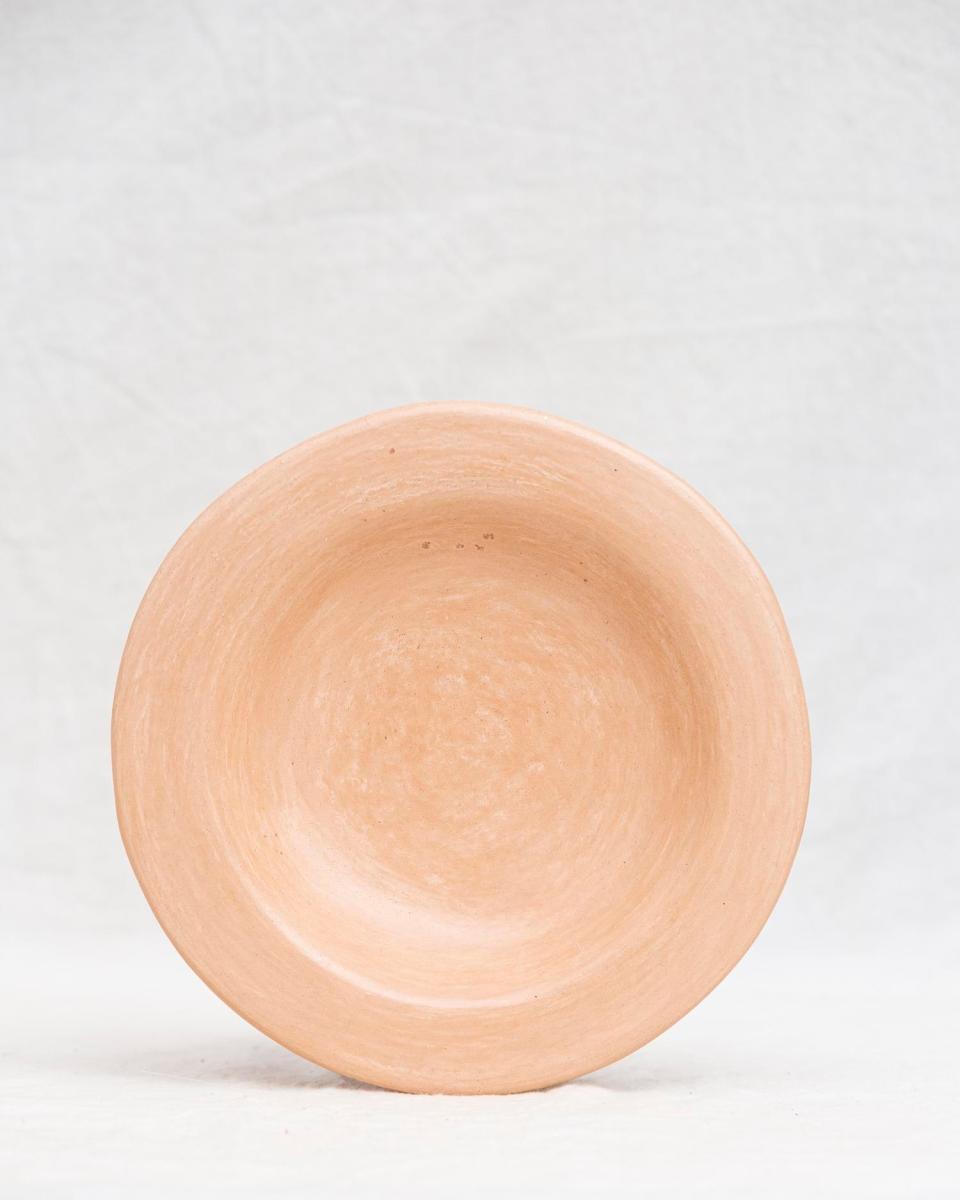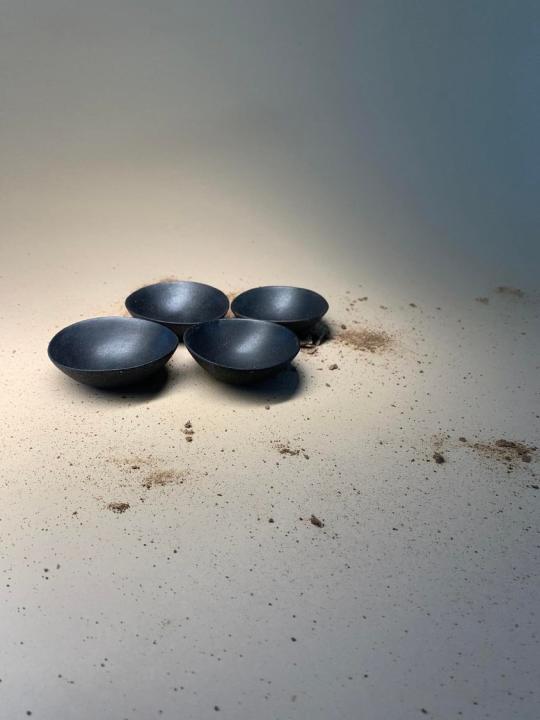MAIDA Is the Homeware Site Bringing Indigenous and Mestizx Artists to the Fore
Down a winding road and past a hand-painted yellow sign offering “PiGS” plus a phone number sits a small adobe house. When I visited in early February, Maida Branch emerged, tailed by two exuberant puppies, and led me to the property’s studio. Once a furniture maker’s workshop, it’s now the base of her online store MAIDA.
“Growing up in New Mexico, the advice was to leave,” Branch said, pouring herbal tea and seeming quite settled despite relocating to Rio Arriba county from Santa Fe a week earlier. “We were told opportunity doesn’t exist and that we’d never find jobs. So at 18 or 20, many of us left.” After nearly a decade in New York and L.A., she returned in 2018 to start what would become MAIDA, exploring her home state and history in the process.
“Throughout my life, I've been frustrated by my own inability to fully speak from a place of what I am,” Branch said. “My family was told they could be killed if they identified as Native American and they’ve assimilated really intensely and been forced to forget a lot about where we came from.” Her great-great grandmother was a Zuni captiva, or member of the Pueblo kidnapped and sold into slavery by the Spanish. Branch identifies as Mestiza, “someone that is of both Native and Spanish blood, a descendant of the slave and the slave holder, of colonists that came to New Mexico and the Indigenous people they forcefully married and had children with.”
MAIDA features the work of a handful of Indigenous and Mestizx artists of the Southwest, using a profit-sharing model where 50% of the product’s price goes directly to the artists. One such artist, Camilla Trujillo, recreates pottery found in archeological digs in Eastern New Mexico, showcasing the interplay between Spanish Franciscan design and local pottery traditions.
Selling pieces by Indigenous artists can be complicated, Branch noted, since not everything made is meant to be sold or used by outsiders. But MAIDA doesn’t sell ceremonial or sacred items; everything for sale is open to use by anyone. Silver jewelry is made in Navajo Nation by Gino Antonio, who uses techniques taught to him by his grandfather. He often casts pieces in tufa, a porous stone, which produces a textured finish. “Camilla and Gino are business relationships, in a sense, but more than anything they’ve become mentors and elders,” Branch said.



When Branch mentioned Trujillo’s work to Johnny Ortiz, who left New Mexico at 19 and returned a few years ago, Ortiz inquired about her firing techniques. (Because kilns weren’t in use in the 1600s when the original pieces were made, Trujillo pit fires her wares then polishes them with stone. She’s collaborated with MAIDA on a clear glaze that makes her pieces safe for eating and everyday use.) “He casually mentioned that after pit firing and stone polishing his own ceramics, he uses beeswax and elk marrow to cure them,” Branch said. Soon, MAIDA was carrying his ceramics too.
Ortiz grew up in Taos, both in town and on the Taos Pueblo; the clay he works with is foraged from the surrounding area. Fired on the full moon, his pieces have a natural shimmer due to the mica in the clay. A batch of plates have already sold out, but MAIDA has just released Ortiz’s mezcal cups. “We thought it would be great to share the small cup design that Johnny often uses at home,” Branch said when I checked in recently. “The cups fit in the palm of your hand and are perfect for sipping anything you want to savor.”

MAIDA was named after Branch’s grandmother. After years of contemplation, Branch recently changed her name from Megan to Maida. Her grandmother grew up in poverty in rural New Mexico and moved to “the big city” (Santa Fe) when she was in her twenties. Branch’s grandfather went to a boarding school down the road from where she now lives. “Growing up, they were told no one cared about their identity and that they shouldn't talk about,” Branch explained. “So it can be uncomfortable, but also liberating and, in a sense, life giving to see that the younger generation finds value in the ways in which they grew up, who they are, and where they come from.”
Before I left, Branch gave me a tour of the property, which includes an old orchard, a long neglected shelter for livestock she’d like to have one day, and a fenced patch of dirt meant for a garden. Her family planned to visit soon. “I'm sure my grandma's going to be like, ‘Why are you living in the middle of nowhere?!’”
But Branch has found a sense of place, one that’s become even more valuable in the wake of the pandemic. “The property I am on requires love and attention; the fruit trees needed pruning, now they need watering, the vegetable garden needs tilling,” Branch said last week. “I feel grateful that some of my work these days requires me to be outside.” She’s found it grounding and mood-boosting. Staying home because of New Mexico’s COVID-19 restrictions, she’s also tried to support a larger community of artists and artisans, particularly those contributing funds to the Navajo Reservation, which has been hit hard by the pandemic. As Branch said, “It’s felt vital for me to support those I love who are doing beautiful work.”
Originally Appeared on Vogue

